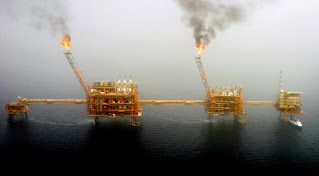How our climate
response and coronavirus are connected
·
Coronavirus pandemic will lead to a deeper
understanding of the links that bind us globally.
style="mso-list: Ignore;">·
Well-resourced healthcare systems are important
to protect us against risks to health, including climate change.
·
The post-pandemic economic resuscitation support
will foster health, education, and environmental protection.
We live in an era in which
intersecting crises are elevated to a global scale, with unprecedented levels
of inequality, environmental destruction and climate destabilization, as well
as new increases in populism, conflict, economic instability, and increasing
threats to public health. All are crises that slowly tip the balance, challenge
our business-as-usual economic model of past decades and allow us to reconsider
our next moves.
There are, to some degree,
similarities between the present COVID-19 pandemic and some of the other global
crises our world faces. All need global-to-local response and long-term
thinking; all need science guidance and protection for the most vulnerable
among us; and all need political will to make significant changes when faced with
existential risks.
In this sense, the 2020
coronavirus pandemic will lead to a deeper understanding of the links that
connect us all globally and can help us come to grips with the century's
greatest public health threat, the climate crisis.
At the World Health Organization
(WHO), where I'm part of the climate change team, we're seeing the catastrophic
effects of under-prepared health systems suffering these increasingly frequent
shocks. Some of these health effects have a clear signature of climate change,
such as the increasing frequency and strength of extreme weather events, or the
expanding range of vector-borne diseases such as malaria or dengue. For some,
including the COVID-19 pandemic, the relation with climate change is less
obvious.
Yet there's one thing that almost
all health shocks have in common: they strike the hardest and most fragile. We
serve as multipliers of poverty, driving families into severe poverty as we pay
for healthcare.
At least half of the world's
population needs complete coverage for the most basic health services. As
health crises strike – and they'll do so steadily in a business-as-usual
scenario – social inequality is maintained and exacerbated, and compensated for
with disadvantaged and oppressed lives.
A first lesson from the COVID-19
pandemic and how it applies to climate change is that well-resourced,
sustainable health systems with a healthy and empowered health workforce are
necessary to protect us from threats to health protection, including climate
change. For economies and communities to be sustainable and stable in an era of
transition, the austerity policies that have weakened many national health
systems over the past decade will need to be reversed.
For example, Haiti's people would
have been much more skilled in dealing with and recovering from the devastating
effects of 2016's Hurricane Matthew – worsened by climate change – if they had
a robust, well-resourced health system in place to sustain them. Similarly,
many Iranian lives could have been saved in the early stages of the country's
COVID-19 epidemic if its beleaguered healthcare system were better prepared for
what would come.
Second, the current pandemic
shows how injustice is a significant obstacle to people's health and
well-being, and how social and economic disparities materialize in unequal
access to healthcare systems. For example, the novel coronavirus' health hazard
is, on average, greater for cities and people subjected to higher rates of
pollution, particularly people living in poorer areas.
The same refers to the
environmental effects of climate change, with one of its main triggers, burning
fossil fuels, increasing air pollution, and disproportionately affecting the
environmental of those in poverty.
WHO reports that by rising
people's environmental and social risk factors, nearly a quarter of the global
health burden (measured as illness, death, and financial loss) may be avoided.
Creating healthy environments for healthy communities and encouraging Universal
Health Coverage (UHC) are two of the most important ways we can minimize
long-term health impacts from both the coronavirus pandemic and climate change,
and improve our resilience and adaptive ability.
Third, the global health crisis
we are in has forced us to radically change our actions to protect ourselves
and those around us, to a degree most of us have never experienced before. This
temporary gear change may lead to a long-term change in old habits and
expectations, leading to public pressure for collective action and successful
risk management. Although climate change presents a slower, longer-term health
threat, an equally drastic and sustained behavioral shift is required to avoid
irreversible harm.
Finally, crises like these offer
an opportunity for a recovered sense of shared humanity in which people realize
what matters most: their loved ones' health and safety, and by extending their
community, country and fellow global citizens' health and safety. Both climate
crisis and pandemic unfolding threaten this one thing we all care about.
When we finally conquer the
COVID-19 pandemic, we will hopefully maintain that sense of common humanity to
restore our social and economic structures and make them stronger, more
sustainable and more humane. Therefore, financial and social support programs
to sustain and ultimately resuscitate post-pandemic global economy will foster
health, education, and environmental protection.
Public health is essentially a
democratic decision. A option we face now, and one we will have to make over
and over again as we move to a more sustainable, zero-carbon, just and safer
future.




Comments
Post a Comment